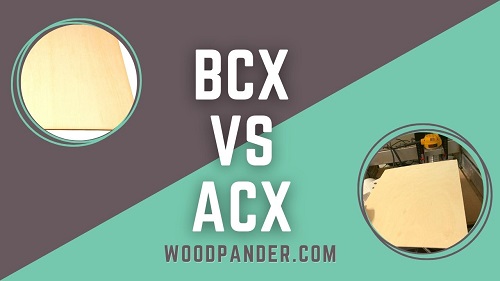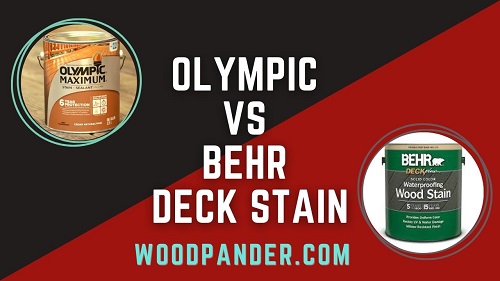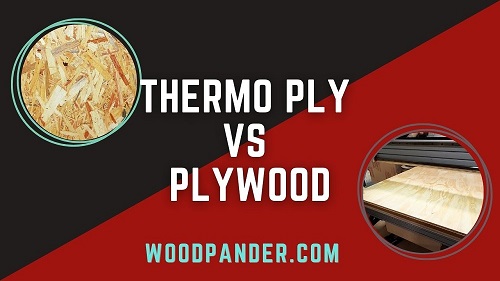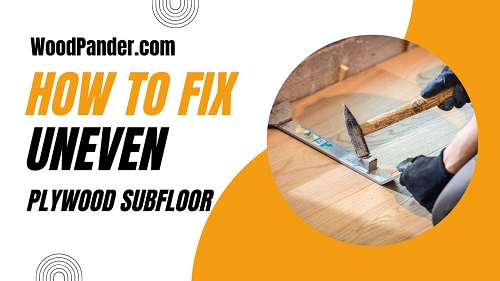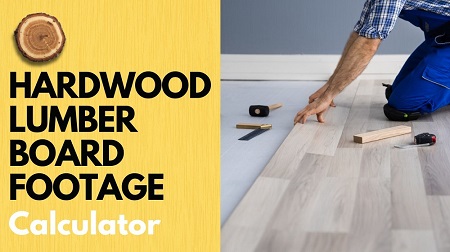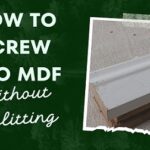When it comes to construction and renovation projects, choosing the right materials is crucial. One of the most important decisions you’ll have to make is selecting the right type of board or paneling to use. In this blog post, we’ll be comparing two popular options: asphalt impregnated board vs plywood.
Asphalt Impregnated Board vs Plywood: A Comparison Table
| Property | Asphalt Impregnated Board | Plywood |
|---|---|---|
| Material | Made of wood fibers and asphalt | Made of thin layers of wood veneer |
| Water Resistance | High | Moderate to high |
| Fire Resistance | High | Moderate |
| Strength | Low to moderate | High |
| Durability | Moderate | High |
| Cost | Low to moderate | Moderate to high |
| Application | Typically used as an underlayment for roofing materials | Used for a variety of applications, including sheathing, flooring, and furniture |
| Environmental Impact | Can contain hazardous chemicals and is not biodegradable | Can be sustainably sourced and may be recycled or reused |
| Maintenance | Requires periodic inspection for damage and replacement | May require periodic sealing or refinishing to maintain appearance and durability |
One of our articles –Ledger Locks Vs. Lag Bolts.
What is Asphalt Impregnated Board?
Asphalt impregnated board, also known as fiberboard or hardboard, is a type of composite panel made from wood fibers and asphalt. The wood fibers are compressed and bonded together with asphalt to create a strong, durable material that’s resistant to moisture, fire, and insects.
Asphalt impregnated board is often used in construction as a substrate for flooring, walls, and roofs. It’s also used for underlayment and as a backing material for tile and other finishes. One of the benefits of using asphalt impregnated board is its cost-effectiveness. It’s typically less expensive than other types of board, such as plywood.
What is Plywood?
Plywood is a type of engineered wood that’s made by gluing together thin layers of wood veneers. The layers are arranged in a cross-grain pattern, which gives the material its strength and durability. Plywood is available in a variety of thicknesses and grades, and it’s commonly used for flooring, walls, roofs, and furniture.
One of the benefits of using plywood is its versatility. It can be used for a wide range of applications, and it’s available in a range of finishes and grades to suit different needs and budgets. However, plywood can be more expensive than other types of board, especially if you opt for high-grade or specialty finishes.
One of our articles –LedgerLOK Vs TimberLOK Fasteners.
Pros and Cons of Asphalt Impregnated Board
Pros
- Durable and resistant to water and moisture
- Cost-effective compared to other materials
- Available in different thicknesses and can be cut to fit any application
Cons
- Difficult to work with due to its weight and density
- Can emit toxic fumes when heated or burned
- Not as strong as other materials and may not be suitable for some applications
Pros and Cons of Plywood
Pros
- Easy to work with and can be cut to size using simple tools
- Available in different grades and thicknesses
- Can be sanded or painted to achieve the desired finish
Cons
- Susceptible to water damage and can warp or rot if not properly protected
- More expensive than asphalt impregnated board
- Not as durable as some other materials and may not be suitable for some applications
One of our articles –
When to Use Asphalt Impregnated Board
Asphalt impregnated board is an excellent choice for roofing and waterproofing applications. It is highly resistant to water and moisture, making it ideal for areas that are prone to heavy rain or snow. It is also a cost-effective option for those on a budget.
However, asphalt impregnated board may not be the best choice for other applications. Due to its weight and density, it can be difficult to work with, especially if you don’t have the proper tools. It is also not as strong as some other materials, so it may not be suitable for applications that require a higher level of strength and durability.
When to Use Plywood
If you’re looking for a versatile and easy-to-work-with material, plywood may be the right choice for your project. Plywood is an excellent option for flooring, roofing, and wall sheathing applications. It can be cut to size using simple tools and can be sanded or painted to achieve the desired finish.
However, plywood does have some limitations. It is susceptible to water damage and can warp or rot if not properly protected. Additionally, plywood is more expensive than asphalt impregnated board, making it less cost-effective for some applications.
Despite these drawbacks, plywood remains a popular choice for many construction projects. Here are some of the most common applications for plywood:
Flooring
Plywood is an excellent choice for flooring because it is strong and durable. It can be used as a subfloor for carpet, tile, or hardwood flooring. It can also be stained or painted to achieve the desired look.
When using plywood for flooring, it’s essential to choose the right thickness and grade for your application. Thicker plywood will be stronger and more durable, while lower-grade plywood may be more prone to warping or splitting.
Roofing
Plywood is commonly used for roofing because it provides a strong and stable base for shingles or other roofing materials. It can also be used for roof sheathing or as a substrate for metal roofing.
When using plywood for roofing, it’s essential to choose a high-quality material that is designed to withstand the elements. Plywood that is not properly sealed or protected can warp or rot over time, leading to leaks and other issues.
Wall Sheathing
Plywood is an excellent choice for wall sheathing because it provides a stable surface for insulation and other materials. It can be used for both interior and exterior walls and can be cut to size using simple tools.
When using plywood for wall sheathing, it’s important to choose a material that is designed to resist moisture and other environmental factors. Plywood that is not properly sealed or protected can become damaged over time, leading to issues with mold and mildew.
Cabinets and Furniture
Plywood is also a popular choice for cabinets and furniture because it is strong, durable, and easy to work with. It can be used as a substrate for veneers or as the main material for the piece.
When using plywood for cabinets and furniture, it’s important to choose a high-quality material that is free of defects or imperfections. Plywood that is not properly sanded or finished can be prone to splintering or cracking over time.
One of our articles –Warm Satin Vs Clear Satin Polyurethane.
Comparison: Asphalt Impregnated Board vs Plywood
So, which is better: asphalt impregnated board or plywood? The answer depends on a variety of factors, including your budget, the specific application, and your personal preferences. Here are some of the key differences between the two materials:
Cost
Plywood, on the other hand, can be more expensive than asphalt impregnated board. The cost depends on a variety of factors, including the type of wood used, the thickness of the board, and the quality of the finish.
Strength and Durability
Both asphalt impregnated board and plywood are strong and durable materials that can withstand heavy use and abuse. However, the specific strength and durability of each material depends on the specific brand, thickness, and finish you choose.
In general, plywood is considered to be stronger and more durable than asphalt impregnated board. Plywood is less likely to warp or buckle over time, and it’s more resistant to moisture and insects.
Moisture Resistance
Both asphalt impregnated board and plywood are designed to be moisture-resistant. However, plywood is generally considered to be more resistant to moisture than asphalt impregnated board. Plywood is less likely to swell or warp when exposed to moisture, making it a popular choice for applications like flooring and roofing.
Asphalt impregnated board can be susceptible to moisture damage over time, especially if it’s not properly sealed or protected. If you’re planning to use asphalt impregnated board in a wet or humid environment, you’ll need to take extra precautions to ensure that it stays dry and protected.
Fire Resistance
One of the benefits of using asphalt impregnated board is its fire resistance. Asphalt impregnated board is designed to be flame-resistant, which can help prevent fires from spreading in the event of an emergency.
Plywood, on the other hand, is not naturally fire-resistant. However, it can be treated with fire-retardant chemicals to increase its resistance to flames. If you’re planning to use plywood in a building or structure that requires fire resistance, you’ll need to select a product that’s been treated with fire-retardant chemicals.
Installation
Both asphalt impregnated board and plywood are relatively easy to install. However, the specific installation process can vary depending on the specific product and application.
Asphalt impregnated board is typically installed using nails or screws. The material is relatively lightweight, which makes it easy to handle and maneuver during installation. However, it can be prone to cracking or splitting if it’s not installed correctly.
Plywood is also typically installed using nails or screws. However, because plywood is thicker and heavier than asphalt impregnated board, it can be more difficult to handle and maneuver during installation. Additionally, plywood can be prone to splitting or cracking if it’s not installed correctly.
Aesthetics
Another factor to consider when choosing between asphalt impregnated board and plywood is aesthetics. Both materials have their own unique look and feel, and the specific appearance can vary depending on the specific product and finish you choose.
Asphalt impregnated board typically has a smooth, uniform surface that’s ideal for painting or staining. However, because the material is made from compressed wood fibers, it can have a somewhat “artificial” appearance that some people may find unappealing.
Plywood, on the other hand, has a natural, organic appearance that’s often used in modern and contemporary design. Plywood is available in a variety of finishes and grades, ranging from high-quality veneers to rough, rustic finishes.
Advantages and Disadvantages of Asphalt Impregnated Board
Asphalt impregnated board has several advantages, including:
- Resistance to moisture, fire, and insects
- High durability and strength
- Good insulation properties
- Minimal expansion and contraction
However, there are also some disadvantages to consider, such as:
- Higher cost compared to other materials
- Limited availability and variety of sizes and thicknesses
- Difficult to cut and shape
Advantages and Disadvantages of Plywood
Plywood also has several advantages, including:
- High strength and durability
- Versatile and can be used for various applications
- Available in a wide range of sizes and thicknesses
- Easy to work with
However, plywood also has some disadvantages, such as:
- Susceptible to moisture damage if not properly treated
- Limited fire resistance compared to asphalt impregnated board
- May contain voids or gaps in the layers, reducing its strength
Choosing the Right Material
When deciding between asphalt impregnated board and plywood, it is essential to consider the specific needs of the construction project. If the project requires a highly durable and moisture-resistant material, asphalt impregnated board may be the better choice. If versatility and ease of use are the priority, plywood may be the better option.
Applications of Asphalt Impregnated Board and Plywood
Asphalt impregnated board is commonly used in roofing, flooring, walls, partitions, and ceilings as a sound and thermal insulation material. It is also used as an underlayment for flooring and as a backing material for roofing shingles.
Plywood is used for a wide range of construction applications, including roofing, flooring, walls, furniture, and cabinets. It is also commonly used as a sheathing material for walls and roofs.
Installation Process
The installation process for asphalt impregnated board and plywood is relatively similar. Both materials are typically fastened to the framing of the building using screws or nails. However, asphalt impregnated board may require special tools and techniques for cutting and shaping.
Maintenance and Repair
Both asphalt impregnated board and plywood require regular maintenance to ensure their longevity. Asphalt impregnated board should be inspected periodically for signs of wear or damage and repaired as necessary. Plywood should be treated with a water-resistant coating to prevent moisture damage.
Sustainability
When it comes to sustainability, both asphalt impregnated board and plywood have their advantages and disadvantages. Asphalt impregnated board is made from petroleum-based asphalt, which is not a renewable resource. However, it is highly durable and long-lasting, reducing the need for frequent replacement.
Plywood is made from wood, a renewable resource, but the production process can be energy-intensive and can contribute to deforestation if not sustainably source
One of our articles –Dowels Vs Pocket Screws.
Related Questions
Is asphalt impregnated board more fire-resistant than plywood?
Yes, asphalt impregnated board is highly resistant to fire, while plywood can easily catch fire and spread flames.
Can plywood be treated to improve its fire resistance?
Yes, plywood can be treated with fire retardants to improve its fire resistance.
Is asphalt impregnated board environmentally friendly?
No, asphalt impregnated board is not considered environmentally friendly due to its use of non-renewable resources and its lack of biodegradability.
What is the cost difference between asphalt impregnated board and plywood?
Asphalt impregnated board is generally less expensive than plywood, making it a popular choice for roofing applications.
What are some guidelines for choosing between asphalt impregnated board and plywood?
Guidelines for choosing between asphalt impregnated board and plywood include considering factors such as fire resistance, insulation, environmental considerations, local building codes, and cost, as well as the specific needs of your construction project.
Conclusion
So, which is better: asphalt impregnated board or plywood? The answer ultimately depends on your specific needs and preferences. If you’re looking for a cost-effective material that’s easy to install and fire-resistant, asphalt impregnated board may be the best choice for you.
However, if you’re looking for a strong, durable material that’s resistant to moisture and has a natural, organic appearance, plywood may be the better option.
No matter which material you choose, it’s important to work with a reputable supplier and contractor to ensure that your project is completed safely and to your satisfaction. With the right materials and expert installation, you can create a beautiful and functional space that meets your needs and exceeds your expectations.
Sources:


